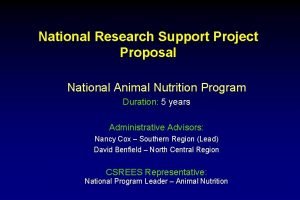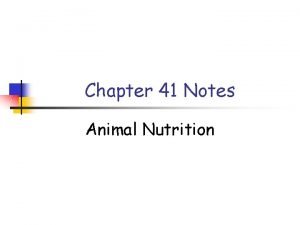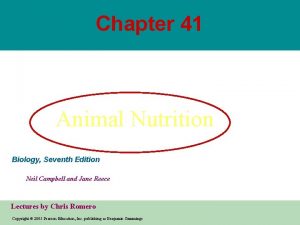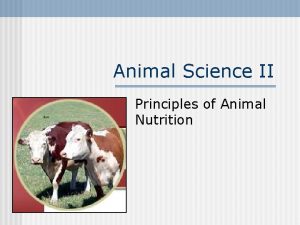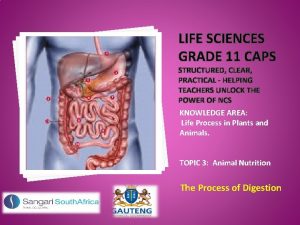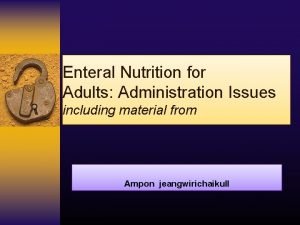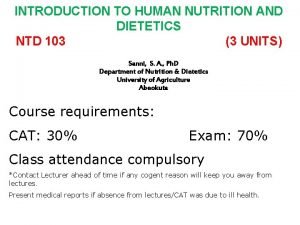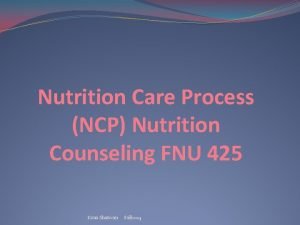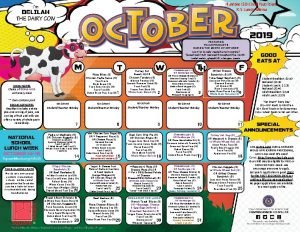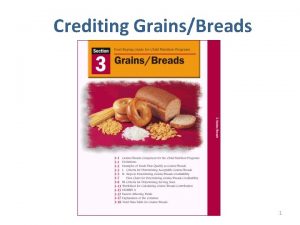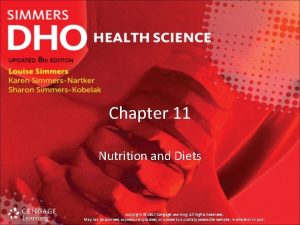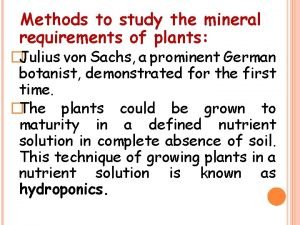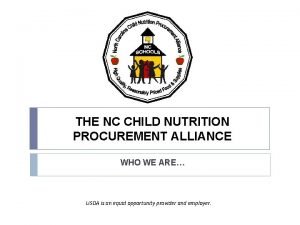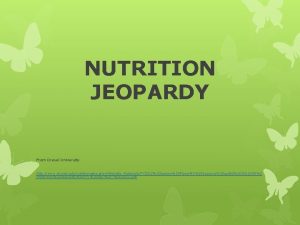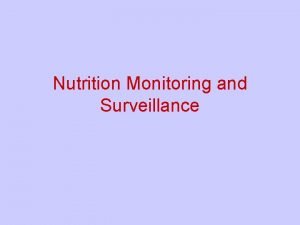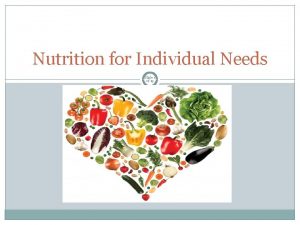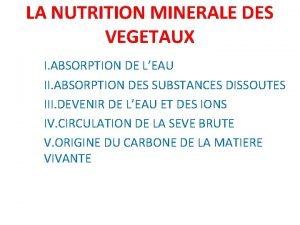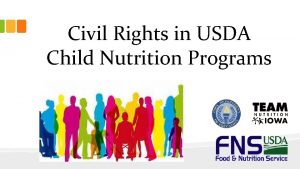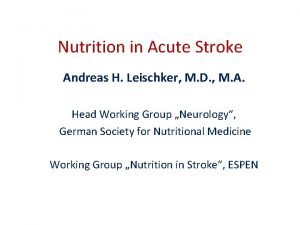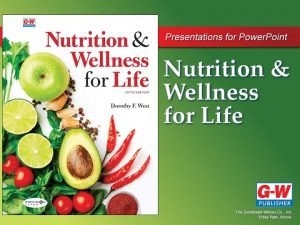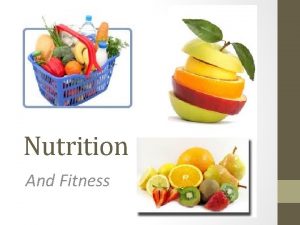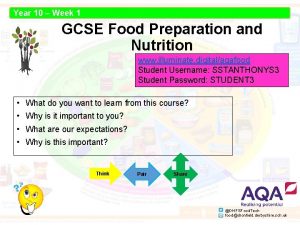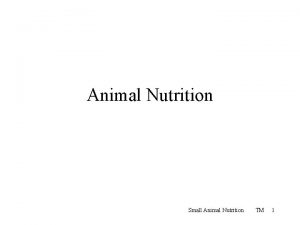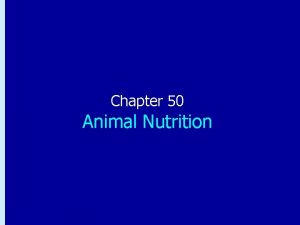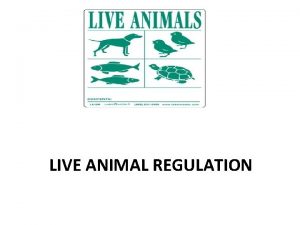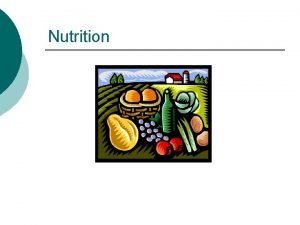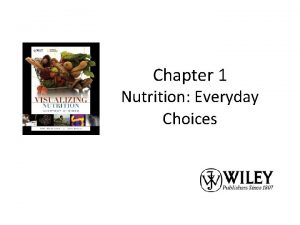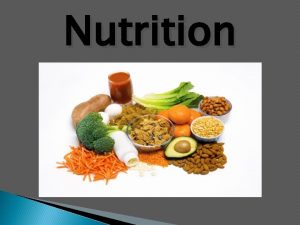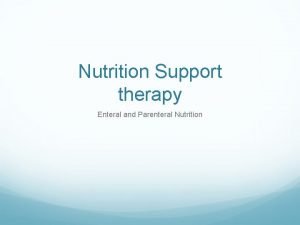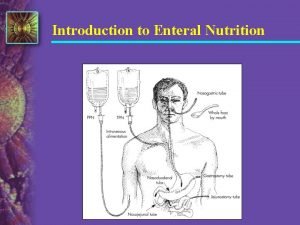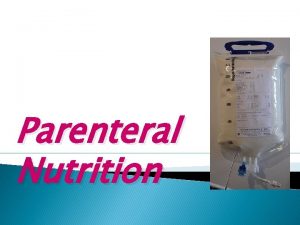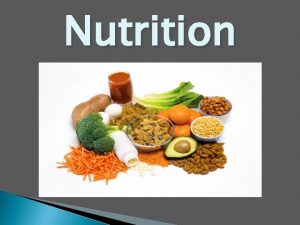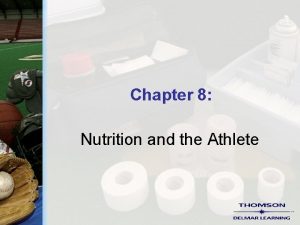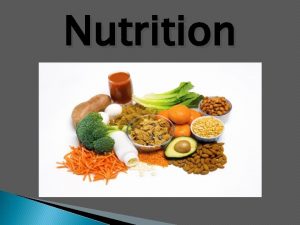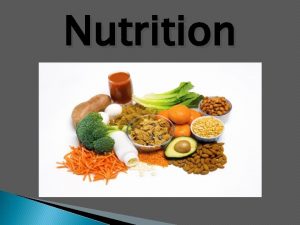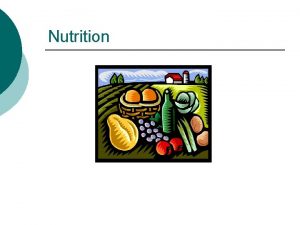Animal Nutrition What do animal need to live

































- Slides: 33

Animal Nutrition

What do animal need to live? • Animals make energy using: – food – oxygen food • Animals build bodies using: – food for raw materials • amino acids, sugars, fats, nucleotides ATP O 2 – ATP energy for synthesis AP Biology 2010 -11

Nutritional Requirements • Animals are heterotrophs – need to take in food – Why? fulfills 3 needs… • fuel = chemical energy for production of ATP • raw materials = carbon source for synthesis • essential nutrients = animals cannot make – elements (N, P, K, Fe, Na, K, Ca. . . ), NAD, FAD, etc. AP Biology 2010 -11

Eating Habits filter (suspension) feeding AP Biology fluid feeding Wild video Jellyfishjellyfish eating Yahoo! Video Search substrate feeding bulk feeding 2010 -11

Different Diets, Different Lives • All animals eat other organisms – Herbivores • eat mainly plants – gorillas, cows, rabbits, snails – Carnivores • eat other animals – sharks, hawks, spiders, snakes – Omnivores • eat animals & plants – cockroaches, bears, raccoons, humans – humans evolved as hunters, scavengers & gatherers AP Biology 2010 -11

Different Diets, Different Lives AP Biology Human digestion overview 2010 -11

Different Diets, Different Lives • Ingest – taking in food • Digest – mechanical digestion • breaking up food into smaller pieces – chemical digestion • breaking down food into molecules small enough to be absorbed into cells • enzymes (hydrolysis) intracellular digestion • Absorb – absorb across cell membrane • diffusion • active transport • Eliminate – undigested extracellular material passes out of digestive system AP Biology extracellular digestion 2010 -11

Digestive System Everybody’s got one! AP Biology 2010 -11

Different Diets, Different Lives AP Biology Human digestive system Alimentary Canal 2010 -11

Digestive System: Common processes and function • Movement & Control – peristalsis • push food along by rhythmic waves of smooth muscle contraction in walls of digestive system – sphincters • muscular ring-like valves, regulate the passage of material between sections of digestive system • Accessory glands – salivary glands, pancreas, liver & gall bladder • secrete digestive juices (enzymes & fluid) AP Biology 2010 -11

Swallowing and not choking • Epiglottis – – problem: breathe & swallow through same orifice flap of cartilage closes trachea (windpipe) when swallowing food travels down esophagus • Esophagus – move food along to stomach by peristalsis AP Biology 2010 -11

Ingestion • Mouth – mechanical digestion • teeth – breaking up food – chemical digestion • saliva – amylase » enzyme digests starch – mucin » slippery protein (mucus) » protects soft lining of digestive system » lubricates food for easier swallowing – buffers » neutralizes acid to prevent tooth decay – anti-bacterial chemicals » kill bacteria that enter mouth with food AP Biology 2010 -11

mouth System: Common processes and function Digestive break up food moisten food digest starch kill germs AP Biology 2010 -11

Stomach • Functions – food storage • can stretch to fit ~2 L food – disinfect food • HCl = p. H 2 – kills bacteria – breaks apart cells – chemical digestion • pepsin – enzyme breaks down proteins – secreted as pepsinogen » activated by HCl But the stomach is made out of protein! What stops the stomach from digesting itself? mucus secreted by stomach cells protects stomach AP Biology lining 2010 -11

mouth Stomach break up food moisten food digest starch kill germs AP Biology stomach kills germs store food break up food digest proteins 2010 -11

Ulcers • Used to think ulcers were caused by stress – tried to control with antacids • Now know ulcers caused by bacterial infection of stomach – Helicobacter pylori – now cure with antibiotics AP Biology 2010 -11

Ulcers "for their discovery of the bacterium Helicobacter pylori and its role in gastritis and peptic ulcer disease" Helicobacter pylori J. Robin Warren Barry Marshall AP Biology 2010 -11

Small Intestine • Function – major organ of digestion & absorption – chemical digestion • digestive enzymes – absorption through lining • over 6 meters! • small intestine has huge surface area = 300 m 2 (~size of tennis court) • Structure – 3 sections • duodenum = most digestion • jejunum = absorption of nutrients & water • ileum = absorption of nutrients & water AP Biology 2010 -11

Duodendum • 1 st section of small intestines – acid food from stomach mixes with digestive juices from accessory glands: § pancreas § liver § gall bladder AP Biology 2010 -11

Pancreas • Digestive enzymes – peptidases • trypsin – trypsinogen • chymotrypsin – chimotrypsinogen • carboxypeptidase – procarboxypeptidase – pancreatic amylase • Buffers – reduces acidity • alkaline solution rich in bicarbonate (HCO 3 -) • buffers acidity of material from stomach AP Biology Explain how this is a molecular example of structure-function theme. 2010 -11

mouth Pancreas break up food moisten food digest starch kill germs stomach kills germs break up food digest proteins store food pancreas produces enzymes to digest proteins & starch AP Biology 2010 -11

Liver • Digestive System Functions – produces bile • stored in gallbladder until needed • breaks up fats – act like detergents to breakup fats Circulatory System Connection bile contains colors from old red blood cells collected in liver = iron in RBC rusts & makes feces brown AP Biology 2010 -11

mouth Liver break up food moisten food digest starch kill germs stomach kills germs break up food digest proteins store food liver produces bile - stored in gall bladder break up fats pancreas produces enzymes to digest proteins & starch AP Biology 2010 -11

Digestive Enzymes AP Biology 2010 -11

Absorption by small Intestine • Absorption through villi & microvilli – finger-like projections • increase surface area for absorption AP Biology 2010 -11

Absorption by small intestine • Passive transport – fructose • Active (protein pumps) transport – pump amino acids, vitamins & glucose • against concentration gradients across intestinal cell membranes • allows intestine to absorb much higher proportion of nutrients in the intestine than would be possible with passive diffusion – worth the cost of ATP! AP Biology 2010 -11

mouth Absorption by small Intestine break up food moisten food digest starch kill germs liver produces bile - stored in gall bladder break up fats pancreas produces enzymes to digest proteins & starch AP Biology stomach kills germs break up food digest proteins store food small intestines breakdown all foods - proteins - starch - fats - nucleic acids absorb nutrients 2010 -11

Large Intestine • Function – re-absorb water • use ~9 liters of water every day in digestive juices • > 90% of water reabsorbed – not enough water absorbed back to body » diarrhea – too much water absorbed back to body » constipation AP Biology 2010 -11

E. Coli • Living in the large intestine is a rich flora of harmless, helpful bacteria – Escherichia coli (E. coli) • a favorite research organism – bacteria produce vitamins • vitamin K; biotin, folic acid & other B vitamins – generate gases • by-product of bacterial metabolism • methane, hydrogen sulfide AP Biology 2010 -11

Rectum • Last section of colon (large intestines) – eliminate feces • undigested materials – extracellular waste » mainly cellulose from plants » roughage or fiber • salts • masses of bacteria AP Biology 2010 -11

mouth break up food moisten food digest starch kill germs liver produces bile - stored in gall bladder break up fats pancreas produces enzymes to digest proteins & carbs AP Biology stomach kills germs break up food digest proteins store food small intestines breakdown food - proteins - starch - fats absorb nutrients large intestines absorb water 2010 -11

Appendix Vestigial organ AP Biology 2010 -11

Questions? ? ? Hungry for Information? Ask Questions! AP Biology 2010 -11
 Www.quizlet.com live
Www.quizlet.com live Live healthy live happy
Live healthy live happy Unit 26 animal anatomy physiology and nutrition
Unit 26 animal anatomy physiology and nutrition Unit 26 animal anatomy physiology and nutrition
Unit 26 animal anatomy physiology and nutrition Project proposal in animal science
Project proposal in animal science Animal nutrition grade 11 practical
Animal nutrition grade 11 practical Animal nutrition notes
Animal nutrition notes Animal nutrition 7th edition
Animal nutrition 7th edition Principles of animal nutrition
Principles of animal nutrition Human nutrition grade 11
Human nutrition grade 11 Plant cell animal cell venn diagram
Plant cell animal cell venn diagram Venn diagram plant vs animal cells
Venn diagram plant vs animal cells Animal rights vs animal welfare
Animal rights vs animal welfare Nutrition focused physical exam / examination
Nutrition focused physical exam / examination Flexiflo feeding tube
Flexiflo feeding tube Medical nutrition therapy for stroke
Medical nutrition therapy for stroke Ntd nutrition
Ntd nutrition Nutrition care plan
Nutrition care plan Humble isd elementary menu
Humble isd elementary menu Grb nutrition
Grb nutrition Cells
Cells Chapter 11 nutrition and diet
Chapter 11 nutrition and diet Mineral nutrition in plants ppt
Mineral nutrition in plants ppt Ncdpi child nutrition
Ncdpi child nutrition Nutrition jeopardy
Nutrition jeopardy Nutrition monitoring definition
Nutrition monitoring definition Nutrition for individual needs
Nutrition for individual needs L'aspiration foliaire
L'aspiration foliaire Civil rights in child nutrition programs
Civil rights in child nutrition programs Andreas leischker
Andreas leischker Public health nutrition definition
Public health nutrition definition Dri nutrition
Dri nutrition Fitness & nutrition
Fitness & nutrition Gcse food tech high skill dishes
Gcse food tech high skill dishes




